The best cameras for shooting 4K @ 120fps video
Which cameras can shoot 4K video at 120fps? From interchangeable lens cameras like the Canon EOS R5 to smartphones like the Samsung Galaxy S20 Ultra to 360 VR options from Kandao, we’ve rounded up the best consumer cameras for 4K 120p footage to help with your filmmaking.
But first, let’s take a look at why you would want to shoot 4K at higher frame rates.
Why shoot video at high frame rates?
In recent years many photographers and filmmakers have sought out cameras that shoot 4K video at 60fps. As technology has advanced, some are now seeking out cameras that shoot 4K at 120fps. Why do people want these higher frame rates?
Let’s begin first by examining the benefits of shooting 4K at 60fps. Shooting at 60fps simply gives you the ability to slow down footage to half speed so you can get that scene-setting slow-motion effect.
You can also output that footage at 29.7fps, which is the standard playback frame rate. This way, 60fps footage can easily be mixed with 29.7fps footage. But while it can, and is commonly, it’s not ideal and we’ll tackle that in a bit.
Starting with the obvious benefits. Footage shot at 60fps that is slowed to 29.7fps enables you to stretch 1 second of footage over 2 seconds. This is perfect for the visual effect of scene-setting. Think Reservoir Dogs.
If you try the same with footage shot at 30fps and slow it down to half speed, then you have to stretch 29.7 frames over 2 seconds – essentially 15 frames per second. That’s not enough, especially at 4K, so you end up with everything looking kind of staccato – to borrow a musical term.
Using this line of thought you’d think that always filming at 60fps would be a good idea, as you can halve its playback speed and mix it with standard 29.7fps footage as needed. However, shooting at 60fps all the time is far from ideal.
Before we go into why, it’s worth pointing out that you should always film at the frame rate you need. If the footage you’re shooting is going to played back at a standard 29.7fps then film at that standard fps. If you want slow motion, then increase the fps to cover the number of frames that you need.
For normal playback at 29.7fps, half-speed you will need 60fps, quarter speed you’ll need 120fps etc. Now we begin to understand why you would film 4K at 120fps.
Using the 180-degree shutter rule
Let’s move on to why you shouldn’t always film at 60fps – even though looking at the basics it would seem sensible.
This is where the technical aspect comes in. You need to think about the 180-degree shutter rule. This dictates that the fps should always be half of the shutter speed. At 29.7fps it’s relatively easy to find a balance of gain (ISO) and IRIS (Aperture) to enable that all-important 1/60th shutter speed.
But, crank that to 60fps and you suddenly need a shutter speed of 1/120th – and that’s quite a jump.
Shooting a frame at 1/120th of second is going to eliminate any motion blur, whereas shooting at 1/60th will give motion blur in the frame. Motion blur is important for video as it helps with that all-important persistence of vision. The blur actually helps with smoothness of playback. For more on this, read our guide on what shutter speed to use for filming moving subjects.
That 4K footage shot at 60fps and 1/120th of a second played back at 60fps will look fine. There’s enough content there for the motion to look silky smooth. Stretch that footage out over 2 seconds and the optical illusion and lack of blur still fools the eye, but, reduce it to 30fps, and you start to break the 180-dgree shutter rule.
The effect is admittedly slight, but it is noticeable. Break the 180-degree shutter rule with faster shutter speeds and you get the action-packed 300 gladiator-style look. Slow it right down and it all becomes a bit romantic.
Ultimately 60fps is a sought-after feature as it enables you to shoot smooth slow motion, and these days it’s an effect that you as a filmmaker can’t be without, but do be careful as using it wrongly can have a dramatic effect.
Why shoot 4K at 120fps?
Recording at 4K at 120fps is pretty niche, but it’s still a fantastic feature to have in a camera.
There are a few points to take into consideration when looking at cameras that shoot 4K at 120fps, such as the amount of data recorded. This is usually measured as 100mb/s (megabits per second) rather than 100mb per frame.
Most cameras, especially mirrorless and DSLR, will therefore split the bit rate across frames as vbr (variable bit rate). If the bit rate was fixed, then at 30fps 100mb/s, each frame would be 3.3Mbs.
Crank it to 60fps and that drops to 1.6Mbs.
This isn’t the way it works due to VBR. The more frames you have, the less change you have between frames and the less data needs recording.
So one frame may max out at 3.3mbs where there’s tonnes of movement, and the next may be 1mbs where there’s less change in the frame.
Shoot at 30fps and the likelihood is that more will change within the frame so the data recorded will be greater.
Still, as the frame rate increases even with that flexibility of variable bitrate, it can still push the limits of the camera’s max 100mb/s.
Take the GoPro as an example. You’d be hard pushed to see the difference in 1080p action footage shot at 30 or 60fps, but push it to 120fps and you start to see some pixelation. At 240fps you really start to see the drop.
Use the same settings for a static scene and the quality of the high fps footage will still look good. Less has changed in the frame so less data needs to be recorded.
Likewise you’ll often see cameras such as the Canon EOS 5D Mark IV that will record 1080p at 60fps, but you need to drop the resolution to 720p to record at 120fps. It’s probably limited by Canon as the 4KMB/s is 500MB/s, which seems insanely high.
For more on this, check out our guides on which frame rate to use when shooting video and what arevariable frame rates and when to use them.
4K at 120fps is amazing, but can the camera actually cope? What’s the mb/s at 4K? Is there enough scope to capture decent footage?
The Sony RX0 can shoot at 1000fps in 1080p, for instance, which seems impressive until you see the quality of the footage in normal lighting conditions.
Then there’s the heat issue. All that processing can come at a price.
Finally, there’s shutter speed. Shooting 4K at 120fps, the shutter speed needs to be set at 1/250th of a second (there’s no 1/240th so you round to closest).
That’s all well and good but then lighting really becomes an issue.
You also need to consider file size and processing power. 4K already consumes storage, but slow-motion footage requires rendering and processing. This is where you really need to start looking at Nvme M.2 hard drives.
Which cameras shoot 4K at 120fps?
Now that we’ve explained what shooting 4K at 120fps allows you to do, let’s take a look at what cameras are capable of doing this. For a deeper dive into the many different camera types and features available, check out our range of camera buying guides.
Canon EOS R5
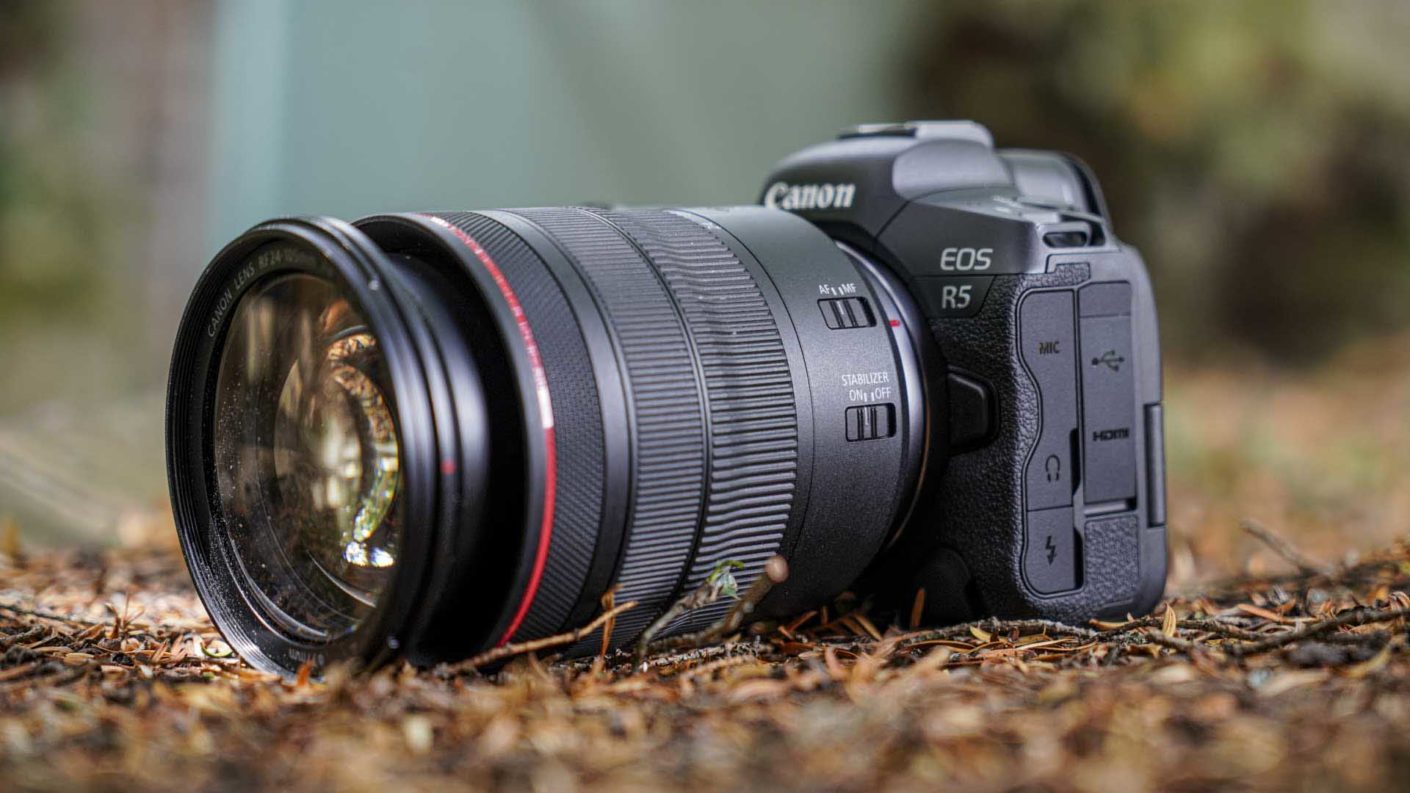
Specification
- Camera Type: Mirrorless
- Announced: 9th July 2020
- Sensor: 45Mp Full-frame Dual Pixel CMOS AF II
- Processor: Digic X
- Lens mount: RF
- Sensitivity range: Stills: ISO 100-51,200 expandable to ISO 50-102,400, Movies: ISO 100-25600, expandable to ISO ISO 51,200
- Metering: 384-zone metering with Evaluative metering (linked to All AF points), Partial metering (approx. 6.1% of viewfinder at centre), Spot metering: Centre spot metering (approx. 3.1% viewfinder at centre), Centre weighted average metering
- Shutter speed range: 1/8000sec-30 seconds and Bulb
- File formats: Raw + Jpeg/HEIF, MP4
- Maximum continuous shooting rate: Mechanical shutter: 12fps, Electronic shutter: 20fps
- Maximum video resolution: Uncropped, internal raw recording 8K video at up to 29.97fps in 4:2:2 10-bit in Canon Log (H.265) or 4:2:2 10-bit HDR PQ (H.265), Uncropped internal recording 4K video at up to 119.88fps in 4:2:2 10-bit in Canon Log (H.265) or 4:2:2 10-bit HDR PQ (H.265) 4:2:2 10-bit in Canon Log or 4:2:2 10-bit HDR PQ, 4K output over HDMI at up to 59.94fps
- Autofocus system: Dual Pixel CMOS AF II phase detection with 5940 points in stills and 4500 points in movie mode
- Viewfinder: 0.5-inch 5.76million-dot OLED electronic viewfinder with 120fps display and 0.76x magnification
- Screen: 3.15-inch 2.1-million dot vari-angle touchscreen
- Autofocus: Dual Pixel CMOS AF II with Advanced Animal AF (recognising dogs, cats and birds) supported in all video modes with 100% coverage and up to 1053 'AF segments'
- Stabilisation: In-body image stabilisation (IBIS) that works with lens IS and enables up to 8-stops of shutter speed compensation
- Storage: Dual slots, 1x CFexpress, 1x SDXC UHS-II
- Dimensions: 135.8 x 97.5 x 88mm
- Weight: 650 g / 738 g with card and battery
Even with the Canon EOS R3 stealing its position, the Canon EOS R5 is still a remarkable camera, serving as the flagship mirrorless camera for Canon. It was without a doubt the most exciting camera of 2020, boasting impressive features.
Although the Canon R5 made headlines with its 8K video capability, it’s primarily a 45Mp stills camera equipped with a remarkable autofocus system. The Dual Pixel CMOS AF II system comes with 5,940 AF points, providing superb eye detection AF for humans, animals, and birds, working seamlessly in both video and stills mode.
In addition to the autofocus system, the Canon EOS R5 also features a 5-axis in-body image stabilization system, which is similar to the Canon EOS R6 announced at the same time. The R5 provides up to 8EV of shutter speed compensation.
This camera is designed for experienced enthusiasts and professional photographers and is positioned at the same level as the Canon EOS 5D Mark IV. It comes with an excellent touch-control interface on the 3.15-inch 2.1-million dot vari-angle screen, coupled with a variety of button and dial controls.
Although 8K video might not be everyone’s cup of tea, the R5 has a 4K HQ (High Quality) mode capable of producing stunning results. Furthermore, the still image quality is exceptional up to around ISO 25,600.
Find the latest deals on the Canon EOS R5 at Amazon UK and Amazon US.
£4199
$3899For
- 45Mp full-frame sensor with full AF coverage
- 12fps/20fps continuous shooting with continuous AF
- Uncropped internal 8K video recording for up to 20 minutes
Against
- 8K video will require lots of storage capacity
Canon EOS R3
Specification
- Camera Type: Mirrorless
- Announced: 14th September 2021
- Sensor: 24.1Mp Full-frame BSI stacked CMOS
- Processor: Digic X
- Lens mount: RF
- Sensitivity range: Stills: ISO 100-102,400 expandable to ISO 50-204,800, Video: ISO 100-25,600 expandable to 100-102,400
- Metering: 384-zone metering with Evaluative metering (linked to All AF points), Partial metering (approx. 5.9% of viewfinder at centre), Spot metering: Centre spot metering (approx. 2.9% viewfinder at centre), Centre weighted average metering
- Shutter speed range: Mechanical shutter: 30- 1/8,000 sec and Bulb, Electronic shutter: 30-1/64,000 sec
- Still file formats: Raw + Jpeg/HEIF
- Maximum continuous shooting rate: Mechanical shutter / 1st curtain electronic: 12fps for 1000+ Jpeg or 1000 raw, Electronic shutter: 30fps for 540 Jpegs or 150 raw images
- Main video resolutions: 6K DCI (17:9) 6000 x 3164 (59.94, 50, 29.97, 25, 24, 23.98fps) raw, 4K DCI (17:9) 4096 x 2160 (59.94, 50, 29.97, 25, 24, 23.98fps) intra or inter frame / light inter frame 4K UHD (16:9) 3840 x 2160 (119.9, 100, 59.94, 50, 29.97, 25, 23.98 fps) intra or inter frame Full HD (16:9) 1920 x 1080 (119.9, 100, 59.94, 50, 29.97, 25, 23.98 fps) intra or inter frame Full HD (16:9) 1920 x 1080 HDR (29.97, 25 fps) inter frame
- Video conatiner formats: MP4, raw (CRM)
- Colour sampling: 6K raw 12bit, 4K/ Full HD - 4:2:0 8-bit or 4:2:2 10bit
- Log: Canon Log 3
- Autofocus system: Dual Pixel CMOS AF II phase detection with 1,053 points
- Viewfinder: 0.5-inch 5.76million-dot OLED electronic viewfinder with 120fps display and 0.76x magnification
- Screen: 3.2-inch 4.15-million dot vari-angle touchscreen
- Stabilisation: In-body image stabilisation (IBIS) that works with lens IS and enables up to 8-stops of shutter speed compensation
- Storage: Dual slots, 1x CFexpress, 1x SDXC UHS-II
- Dimensions: 150x 142.6 x 87.2mm
- Weight: 822g body only, 1015g with card and battery
Canon has given the EOS R3 very similar video capability to the EOS R5 although it maxes out at 6K rather than 8K. As such, the R3 is able to capture 6K raw video at 60p using the Canon Cinema Raw Light (.CRM) format, which gives the videographer greater post-capture control over exposure, colour and white balance than when shooting non-raw video.
It’s also possible to create 4K footage oversampled from 6K at up to 60P to deliver better quality 4K movies. Canon Log 3 is also available, enabling 10-bit internal recording for greater dynamic range while 10-bit HDR PQ reduces the amount of post-production editing or grading.
For those interested in slow-motion video, the R3 can capture 4K video at up to 120p. The camera can also record up to 6 hours of ‘regular’ video or 1.5 hours at high 119.88/100p frame rates, according to Canon.
Furthermore, footage can be recorded in the All-I, IPB, or smaller IPB light format at a variety of bit rates. The EOS R3 also offers dual memory card slots, enabling simultaneous 6K raw video recording on two memory cards for peace of mind.
£5880
$5999 / €6689.99For
- 24Mp full-frame sensor with full AF coverage
- 12fps/30fps continuous shooting with continuous AF
- Eye Control AF
Against
- 6K raw video requires lots of storage capacity
- Control layout different from EOS-1D X mark III and existing R-series cameras
- Less durable buttons than on the 1D X III
Sony A7S III
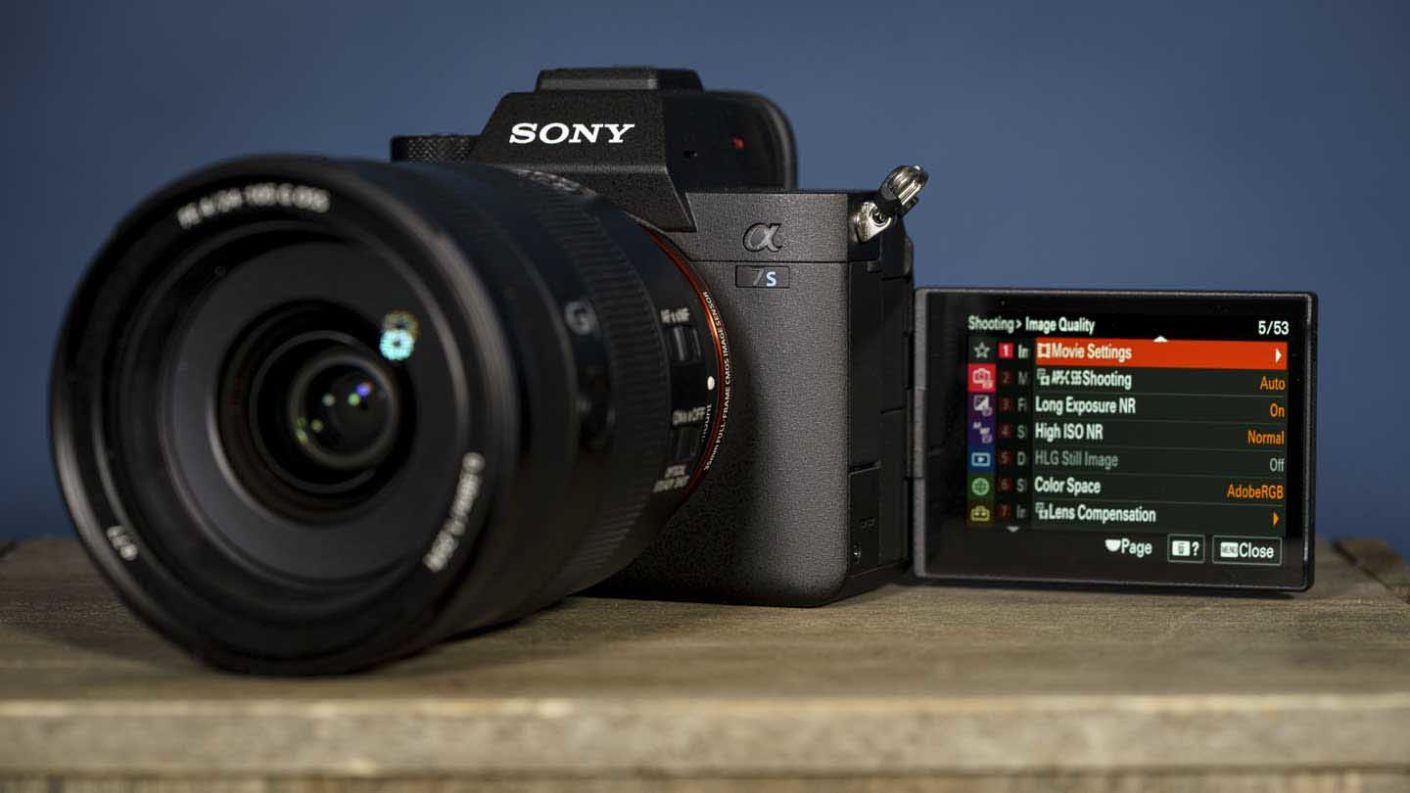
Specification
- Camera type: Full-frame mirrorless
- Announced: 28th July 2020
- Sensor: Full-frame 12.1Mp BSI CMOS
- Processing engine: Bionz XR
- Sensitivity: Video: ISO 80-102,400 expandable ISO 40-409,600. ISO base in S-Log is ISO 640 but it can be expanded down to ISO 160. Stills: ISO 80-102,400 expandable 40-409,600
- Autofocus system: Hybrid with 759 phase detection points and 425 contrast detection points, Real Time Eye AF (Human and Animal for stills, Human for video)
- Stabilisation: 5-axis IBIS and digital, up to 5.5EV shutter speed compensation
- Video resolution: 4K at up 120fps and 1080p at 240fps, 10-bit and 4:2:2 colour, 16-bit raw video over HDMI
- Video file formats: XAVC S,XAVC HS
- Video compression: XAVC S: MPEG-4 AVC/H.264, XAVC HS: MPEG-H HEVC/H.265
- 4K Video details: XAVC HS 4K 3840 x 2160 (4:2:0, 10bit, NTSC): 120p (200Mbps), 60p (150Mbps / 75Mbps / 45Mbps), 24p (100Mbps / 50Mbps / 30Mbps); 3840 x 2160 (4:2:0, 10bit, PAL): 100p (200Mbps), 50p (150Mbps / 75Mbps / 45Mbps); 3840 x 2160 (4:2:2, 10bit, NTSC): 120p (280Mbps), 60p (200Mbps / 100Mbps), 24p (100Mbps / 50Mbps); 3840 x 2160 (4:2:2, 10bit, PAL): 100p (280Mbps), 50p (200Mbps / 100Mbps) XAVC S 4K 3840 x 2160 (4:2:0, 8bit, NTSC): 120p (200Mbps), 60p (150Mbps), 30p (100Mbps / 60Mbps), 24p (100Mbps / 60Mbps); 3840 x 2160 (4:2:0, 8bit, PAL): 100p (200Mbps), 50p (150Mbps), 25p (100Mbps / 60Mbps); 3840 x 2160 (4:2:2, 10bit, NTSC): 120p (280Mbps), 60p (200Mbps), 30p (140Mbps), 24p (100Mbps); 3840 x 2160 (4:2:2, 10bit, PAL): 100p (280Mbps), 50p (200Mbps), 25p (140Mbps) XAVC S-I 4K 3840 x 2160 (4:2:2, 10bit, NTSC) (Approx.): 60p (600Mbps), 30p (300Mbps), 24p (240Mbps); 3840 x 2160 (4:2:2, 10bit, PAL): 50p (500Mbps), 25p (250Mbps)
- Gamut: S-Log2 and S-Log3, S-Gamut3.Cine and S-Gamut3
- Slow and Quick (S&Q) mode options: NTSC: 1fps,2fps,4fps,8fps,15fps,30fps,60fps,120fps, 240fps4, PAL: 1fps,2fps,3fps,6fps,12fps,25fps,50fps,100fps, 200fps
- Still File formats: Raw, JPG, HEIF
- Screen: 3-inch 1,440,000-dot vari-angle touchscreen
- Viewfinder: 0.64-inch type 9,437,184-dot OLED electronic viewfinder, with refresh rate up to 120fps, adjustable magnification up to 0.9x
- Maximum continuous shooting rate: 10fps with mechanical or electronic shutter for up to 1000 uncompressed raw files when a CFexpress Type 1 card is used
- Storage: Dual: SD/SDHC/SDXC (UHS-II) and CFexpress Type A
- Dimensions (W x H x D): 128.9 x 96.9 x 80.8mm / 5 1/8 x 3 7/8 x 3 1/4 inches
- Weight: 699g / 1 lb 8.7 oz
The headline video feature of the Sony a 7S III is that it can shoot 4K video at up to 120p and full HD footage at up to 240p, with full-sensor readout no pixel-binning and with the hybrid autofocus system in action.
In addition, the camera offers 10-bit colour depth and 4:2:2 colour sampling across all recording formats. Sony has introduced new video formats – XAVC S-I 4K (All-Intra) and XAVC HS 4K (Long GOP) – and has made improvements to the XAVC S 4K (Long GOP) format for the a7S III.
The All-Intra recording format captures more data than Long GOP, but it also requires higher bit rates and more storage capacity. It’s useful when the best quality 4K video is required for internal recording.
XAVC S-I 4K (All-I) can be used in normal recording at 50/25 frames per second and 10-bit 4:2:2 500Mbps, and in S&Q (Slow and Quick) mode at 110/50/25/12/6/3/2/1 frames per second at 25p (4x slow-mo)/50p and 10-bit 4:2:2 250Mbps. It’s important to note that using a CFexpress card is essential for the S&Q options.
While audio isn’t recorded in S&Q mode, the AF system remains operational, so tracking a fast-moving subject and creating a slow-motion video should not be an issue.
The a7S III can record to a UHS-II SD card or a CFexpress Type A card in the memory port. It can also output 16-bit raw 4K 60 frames per second footage via its HDMI 2.1 connection to an Atomos Ninja V. It’s important to remember that 60 frames per second is the maximum framerate supported by HDMI 2.1.
£3800
€4200 / $3499For
- Large pixels for great low-light performance
- 4K full-pixel readout without binning and 10-bit depth 4:2:2 colour available in all recording formats
- Vari-angle touchscreen and class-leading electronic viewfinder
Against
- 12Mp seems low resolution for stills
- Uses a new memory card format (CFexpress Type A) that's interchangeable with SD
Nikon Z9
Specification
- Camera type: Full-frame mirrorless camera
- Announced: 28th October 2021
- Lens mount: Nikon Z
- Sensor: Full-frame (FX 35.9 x 23.9mm) 45.7MP stacked backside illuminated (BSI) sensor
- Processing engine: Expeed 7
- Stabilisation: 5-axis sensor shift giving 6EV shutter speed compensation
- Sensitivity: ISO 64-25,600, expandable to ISO 32-102,400
- Maximum continuous shooting rate: 20fps for up to 1000+ raw (high efficiency) files or 685 raw (high efficiency *) files, 30fps for up to 1000+ normal-quality Jpegs, or 120fps normal-quality 11Mp Jpegs
- Autofocus system: Hybrid with phase and contrast detection
- Phase detection points: 493
- AF-area modes: Pinpoint (available in photo mode only), single-point, dynamic-area (S, M, and L; available in photo mode only), wide-area (S and L), and auto-area AF, 3D-tracking (available in photo mode only), subject-tracking AF (available in video mode only)
- Video resolution: 8K (7680 x 4320): 30p (progressive)/25p/24p, 4K (3840 x 2160): 120p/100p/60p/50p/30p/25p/24p, Full HD (1920 x 1080): 120p/100p/60p/50p/30p/25p/24p
- Video file format: MOV, MP4
- Video compression: Apple ProRes 422 HQ (10 bit), H.265/HEVC (8 bit/10 bit), H.264/AVC (8 bit)
- Viewfinder: 0.5-inch 3.69-million-dot, 3,000-nit OLED viewfinder
- Screen: 3.2-inch 2,100,000-dot 4-way-tilting touch-screen
- Storage: Dual XQD/CFexpress
- Dimensions (W x H x D): 149 x 149.5 x 90.5 mm / 5.9 x 5.9 x 3.6 inches
- Weight: 1340 g / 2 lb. 15.3 oz.with battery and memory card but without body cap and accessory shoe cover, Body only: 1160g / 2 lb. 9 oz.
A flagship camera needs to be capable of recording great video as well as superb stills, and the Nikon Z9 can deliver 8K video recording from 24p to 60p, or 4K video at 24p up to 120p. With its design focused on dissipating heat, the Z9 can record 8K 30p video for about 125 minutes continuously.
Moreover, while shooting 8K video, the Z9 retains its full autofocus and exposure metering capabilities, which includes Eye-detection AF.
Except for Full HD/24p, 25p, and 30p, the camera is compatible with the 10-bit ProRes 424 HQ format at up to 4K 60p. Furthermore, a firmware update slated for 2022 will enable raw 8K video at 60p, and another update will add N-Raw format recording to reduce file sizes to roughly half that of ProRes Raw files.
In addition, the Z9 has an in-camera time-lapse movie function.
£5299
€6299For
- New 45.7Mp full-frame sensor sensor
- Advanced AF system
- Durable, weatherproof build
Against
- No mechanical shutter
- Firmware updates to come in 2022 to get the full video feature set
Fujifilm X-H2S
Specification
- Camera type: Mirrorless
- Announced: 31st May 2022
- Sensor: 26.16Mp APS-C (23.5 x 15.6mm) X-Trans CMOS 5 HS
- In body image stabilisation: 5-axis giving up to 7EV shutter speed compensation
- Processing engine: X-Processor 5
- Lens mount: Fujifilm X
- Sensitivity range: ISO 160-12,800 expandable to ISO 80-51,200
- Autofocus system: Intelligent Hybrid with up to 425 points plus subject detection for humans, animals, birds, automobiles, motorcycles, aeroplanes and trains
- Max continuous shooting rate: Electronic shutter: 40fps for 184 jpegs, 170 lossless compressed raw or 140 uncompressed raw, Mechanical shutter: 15fps for 1000+ jpegs, lossless compressed raw or 1000 uncompressed raw
- Max video resolution: 6.2K (6240x4160) 29.97/25/24/23.98p, DCI 4K (4096x2160) 59.94/50/29.97/25/24/23.98p or 120/100p in High Speed mode, 4K (3840x2160) 59.94/50/29.97/25/24/23.98p or 120/100p in High Speed mode
- Viewfinder: 0.5 inch 5.76 million-dot OLED Color Viewfinder with 100% coverage Eyepoint: approx. 24mm Diopter adjustment: -5~+3m-1 Magnification: 0.8× with 50mm lens
- Screen: Vari-angle 3-inch LCD with 1.62-million dots
- Dimensions: 136.3 x 92.9 x 84.6mm
- Storage: Dual: 1x CFexpress type B, 1x DS/SDHC/SDXC UHS-II
- Weight: 579g (body only), 660g with battery and card
Fujifilm’s X-H2S marks a significant upgrade over its predrecessor, and is a versatile camera suitable for both stills and video. With internal recording, the camera can capture 6.2K video at 29.97p and 4K video at 4:2:2 10 bit with no crop. It can also shoot DCI 4K video at 120p/100p with a 1.29x crop and FHD video at 240p/200p with a 1.38x crop. Furthermore, the camera has a full-size HDMI port and external recording capability.
The X-H2S has long recording times for these resolutions, with the ability to shoot 4K 60p video for up to 240 minutes at 25°C before overheating. However, in hotter climates, recording time may drop to around 15 minutes, but the camera is equipped with a fan that can be attached to the back to assist with cooling and extend 4K 60p recording time to 51 minutes.
Fujifilm has included F-Log2, which allows for video recording with up to 14 stops of dynamic range, making it an excellent choice for videographers.
£2499
$2499For
- 40fps continuous shooting with AF
- Subject detection at 40fps and during video
- 6.2K video
Against
- Change in control layout in comparison with the X-H1
- Focus mode switch replaced with a button
- No dedicated exposure compensation dial
Panasonic Lumix G9II
Specification
- Camera type: Mirrorless Micro Four Thirds
- Announced: 12th Sepetmber 2023
- Sensor: 25.2Mp Four Thirds type (17.3 x 13.0mm) Live MOS
- Lens mount: Micro Four Thirds
- Autofocus system: Hybrid (contrast and phase detection) with 779 phase points, 315 contrast points
- Stabilisation: 5 axis in-body IS to 8EV, 7.5 with Dual IS
- Screen: 3-inch 1.84-million-dot vari-angle touchscreen
- Viewfinder: 3.68-million-dot OLED electronic viewfinder with 0.74x magnification
- Key video specifications: [5.8K] 5760x4320 (4:3) at 29.97p, 200Mbps (4:2:0 10-bit LongGOP) (H.265/HEVC, LPCM) or 23.98p, 200Mbps (4:2:0 10-bit LongGOP) (H.265/HEVC, LPCM), [5.7K] 5728x3024 (17:9) at up to 59.94p, 300Mbps (4:2:0 10-bit LongGOP) (H.265/HEVC, LPCM), [4.4K] 4352x3264 (4:3) at up to 59.94p, 300Mbps (4:2:0 10-bit LongGOP) (H.265/HEVC, LPCM), [C4K] 4096x2160 at up to 119.88p, 300Mbps (4:2:0 10-bit LongGOP) (H.265/HEVC, LPCM), 59.94p, 800Mbps (4:2:2 10-bit ALL-Intra) (H.264/MPEG-4 AVC, LPCM), 59.94p, 600Mbps (4:2:2 10-bit ALL-Intra) (H.264/MPEG-4 AVC, LPCM), 59.94p, 200Mbps (4:2:2 10-bit LongGOP) (H.264/MPEG-4 AVC, LPCM), 59.94p, 200Mbps (4:2:0 10-bit LongGOP) (H.265/HEVC, LPCM)
- Sensitivity: Stills: Normal: ISO 100-25600, extended to IOS 50, V-Log ISO 500-12,800, extended to ISO 125. Video: Normal: Sensor output is 60fps or less (Base ISO 100): 50 (Extended ISO) / 100-12800, Sensor output is 61fps or higher (Base ISO 100): 50 (Extended ISO) / 100-3200 / 4000-12800 (Extended ISO) V-Log: Sensor output is 60fps or less (Base ISO 500): A125-400 (Extended ISO) / 500-12800, Sensor output is 61fps or higher (Base ISO 250): 125-200 (Extended ISO) / 250-3200 / 4000-12800 (Extended ISO) Hybrid Log Gamma: Sensor output is 60fps or less (Base ISO 250): 250-12800 Sensor output is 61fps or higher (Base ISO 250): 250-3200 / 4000-12800 (Extended ISO)
- Shutter speed: Stills: 60-1/8,000sec, Electronic front curtain shutter: Bulb (Max. 30 minutes), 1/2,000 - 60 Electronic shutter: Bulb (Max. 60 sec), 1/32,000 - 60 Video: 1/25,000 - 1/25m Creative Video M mode / MF mode: 1/25,000 - 1/8
- Maximum continuous shooting rate: Mechanical shutter: H: 14 frames/sec (AFS/MF), 10 frames/sec (AFC) (with Live View), Electronic front curtain shutter: H: 14 frames/sec (AFS/MF), 9 frames/sec (AFC) (with Live View), Electronic shutter: SH75: 75 frames/sec (AFS/MF), SH60: 60 frames/sec (AFS/AFC/MF), SH75 PRE: 75 frames/sec (AFS/MF), SH60 PRE: 60 frames/sec (AFS/AFC/MF), SH20 PRE: 20 frames/sec (AFS/AFC/MF)
- Memory: Dual SD card slots, both UHS-II
- Battery life: With SD card: 370 images, 1300 images (Power Save LVF mode)
- Weight: 658g / 1.45 lb (Body, Hot Shoe Cover, Battery, SD Memory Card x 1) (excluding body cap), 575g / 1.27 lb (Body, Hot Shoe Cover) (excluding body cap)
- Dimensions (WxHxD): 134.3 x 102.3 x 90.1 mm / 5.29 x 4.03 x 3.55 inch (Body only, excluding protrusions)
The Panasonic Lumix G9 II steps up its video game with resolutions of 5.7K at 60p and 4K at 120p, alongside a greatly improved autofocus system. The camera also offers recording in 4:2:0 10-bit, delivering up to 13 stops of dynamic range when shooting in V-Log, positioning itself as a strong choice for serious videographers at a pretty modest price point that won’t break the bank.
£1699
€1899 / $1599For
- Phase detection focusing with subject detection
- V-log pre-installed
- Hand-held 100MP High Resolution mode
Against
- Large for a Micro Four Thirds camera
Panasonic Lumix GH6
Specification
- Camera type: Micro Four Thirds mirrorless
- Announced: 22nd February 2022
- Sensor: 25.21 Mp Live MOS Sensor (17.3 x 13mm)
- Key video specs: 5.8K (5760x4320) (4:3) at 29.97p, 200Mbps (4:2:0 10-bit LongGOP) (H.265/HEVC, LPCM), 5.7K (5728x3024) (17:9) at 59.94p, 300Mbps (4:2:0 10-bit LongGOP) (H.265/HEVC, LPCM), 4.4K (4352x3264) (4:3) at 59.94p, 300Mbps (4:2:0 10-bit LongGOP) (H.265/HEVC, LPCM), 4.4K (4352x3264) (4:3) at 59.94p, 300Mbps (4:2:0 10-bit LongGOP) (H.265/HEVC, LPCM), 4K (3840x2160) at 119.88p, 300Mbps (4:2:0 10-bit LongGOP) (H.265/HEVC, LPCM), FHD (1920x1080) t 239.76p, 800Mbps (4:2:2 10-bit ALL-Intra) / 200Mbps (4:2:2 10-bit LongGOP) (H.264/MPEG-4 AVC, LPCM
- Video format: MOV: H.264/MPEG-4 AVC, H.265/HEVC, Apple ProRes MP4: H.264/MPEG-4 AVC, H.265/HEVC
- Log Mode: V-Log L pre-installed
- Sensitivity range: Stills (normal): ISO 100-25600 (expandable to ISO 50-25600), (V-Log) ISO 250-12800 (expandable to ISO 125-12800), Video: (Normal) Dynamic Range Boost OFF (Base ISO 100): Auto / 50 (Extended ISO) / 100-12800 Dynamic Range Boost ON (Creative Video Mode) (Base ISO 800): Auto / 800-12800 (V-Log) Dynamic Range Boost OFF (Base ISO 250): Auto / 125 (Extended ISO) / 250-12800 Dynamic Range Boost ON (Creative Video Mode) (Base ISO 2000): Auto / 2000-12800 (Hybrid Log Gamma) Dynamic Range Boost OFF (Base ISO 250): Auto / 250-12800 Dynamic Range Boost ON (Creative Video Mode) (Base ISO 2000): Auto / 2000-12800
- AF system: Contrast detection with DFD
- Stabilisation: 5-axis Dual IS II giving up to 7.5EV shutter speed compensation
- Viewfinder: 3.68m-dot OLED with up to 120fps refresh rate
- Touchscreen: 3-inch 1.84m-dot tilt & free-angle touchscreen
- Storage: Dual slots, 1 CFexpress Type B, 1 UHS-II SD
- Maximum stills continuous shooting rate: Mechanical shutter: H: 14 frames/sec (AFS/MF), 8 frames/sec (AFC) (with Live View) M: 6 frames/sec (AFS/MF) (with Live View), 5 frames/sec (AFC) (with Live View) L: 2 frames/sec (AFS/MF/AFC) (with Live View) Electronic shutter: SH75: 75 frames/sec (AFS/MF) SH60: 60 frames/sec (AFS/MF) SH20: 20 frames/sec (AFS/MF) H: 14 frames/sec (AFS/MF), 7 frames/sec (AFC) (with Live View) M: 6 frames/sec (AFS/MF) (with Live View), 5 frames/sec (AFC) (with Live View) L: 2 frames/sec (AFS/MF/AFC) (with Live View)
- Dimensions (HxWxD): 100.3 x 138.4 x 99.6 mm (excluding protrusions)
- Weight: 739g with SD card and battery
The GH6 – the latest in Panasonic’s much-loved GH line – is a highly capable camera when it comes to video, with a vast array of options and combinations to choose from. For example, it can record 5.7K 30p video in ProRes 422 HQ or ProRes 422, directly onto a CFexpress Type B card.
The camera is also capable of capturing 5.7K 4:2:0 10-bit video at 60p/50p and anamorphic 4:3 footage at 5.8K 30p/25p/24p with 4:2:0 10-bit quality using the full sensor. Additionally, it can simultaneously record 4:2:2 10-bit Cinema 4K 60p both internally and over HDMI.
For creative speed ramping, the GH6 offers the ability to record 4:2:0 10-bit 4K 120p (equivalent to 5x slow motion) and 4:2:2 10-bit FHD 240p HFR (High Frame Rate) footage with audio. Variable Frame Rate (VFR) recording is also possible, with a maximum of 300fps at FHD resolution (equivalent to 12.5x slow motion) for more dynamic videos. For more details on the camera’s video capabilities, check out our Panasonic GH6 review.
Panasonic has even more in store for GH6 users, with new firmware coming in July 2022 that will enable DCI 4K raw video data output over HDMI at up to 120fps, as well as additional internal recording options. All of these features make the GH6 an exceptional camera, especially considering its price point.
£2000
$2199.99 / €2199.99For
- Extensive array of video features
- Excellent stabilisation system
- Excellent image quality for the sensor size
Against
- Big & heavy for a Micro Four Thirds camera
- AF system not up with the best
GoPro Hero12 Black
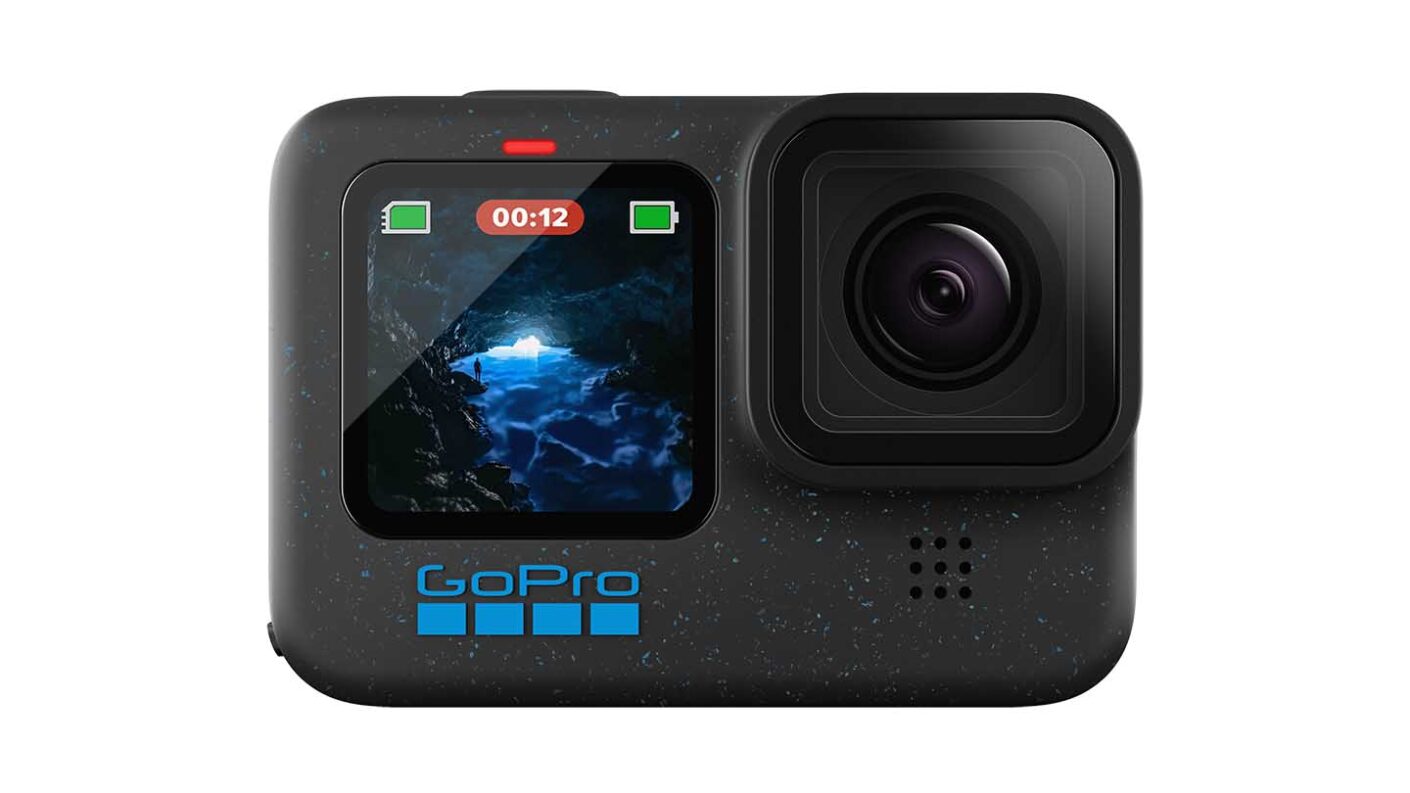
Specification
- Max video modes: 5.3K60 / 4K120 5.3K30 8:7 / 4K60 8:7
- HDR Video modes: 5.3K (16:9) 30, 25, 24 fps 4K (8:7) 30, 25, 24 fps 4K (16:9) 60, 50, 30, 25, 24 fps
- Digital Lenses: HyperView, SuperView, Wide, Linear, Linear + Horizon Lock
- Video stabalisation: HyperSmooth 6.0
- Video file format: H.265 (HEVC)
- Colour video bit depth§: GP-Log with LUT, 10-Bit, 8-bit
- Maximum video bit rate: Up to 120Mbps (5.3K / 4k)
- Photo Intervals: 0.5, 1s, 2s, 3s, 5s, 10s, 30s, 60s, 120s
- Simultaneous Bluetooth Devices: Up to 4
- Processor: GP2
- Dimensions: 71.8 W x 50.8 H x 33.6 D (mm)
- Weight: 154g
After all these years, the Hero Black remains the best action camera you can buy, and this latest iteration again expands what’s possible. The GoPro Hero12 Black elevates action videography with its capability to shoot 5.3K at up to 60 FPS and 4K at up to 120 FPS. It stands out for its versatility in high-resolution slow-motion capture, especially for FPV drone enthusiasts, marking a notable upgrade with improved battery life and enhanced video features.
£399
$333DJI OSMO Action 4
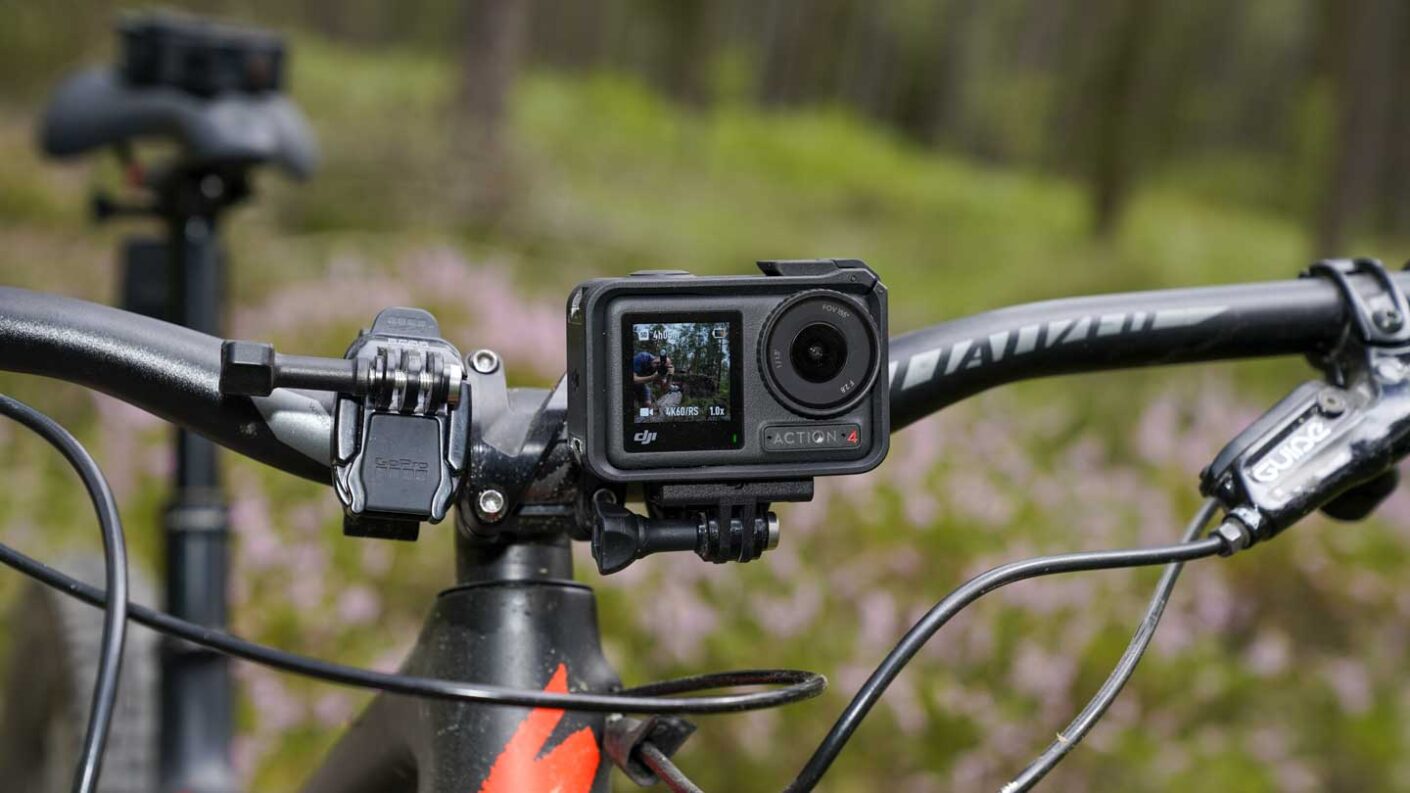
Specification
- Camera dimensions: 70×44×31.8 mm
- Weight: 145g
- Waterproof up to: 16m (with housing up to 60m)
- Lens : 155º f/2.8 lens
- Sensor: 1/1.3-inch sensor
- Resolutions and Framerates: 4K (4:3): 3840×2880 @ 24/25/30/48/50/60fps, 4K (16:9): 3840×2160 @ 100/120fps, 4K (16:9): 3840×2160 @ 24/25/30/48/50/60fps, 2.7K (4:3): 2688×2016 @ 24/25/30/48/50/60fps, 2.7K (16:9): 2688×1512 @ 100/120fps, 2.7K (16:9): 2688×1512 @ 24/25/30/48/50/60fps, 1080p (16:9): 1920×1080 @ 100/120/200/240fps, 1080p (16:9): 1920×1080 @ 24/25/30/48/50/60fps.
- Stabalisation: RockSteady 3.0+ with HorizonBalancing and HorizonSteady
- Storage: MicroSD card support with max 130Mbps bitrate
- Battery life: 160 Minutes
Close on the heels of GoPro, as always, is DJI’s Osmo Action series of action cameras. The DJI Osmo Action 4 is heralded as one of the best compact low-light action cameras, rivaling even the GoPro Hero12 Black. It shines with its 4K video capability at up to 120fps, making it an excellent choice for capturing crisp, smooth slow-motion footage in a variety of conditions.
£379
$399For
- Solid build
- 10-Bit D-Log Video
- 4K @ 120fps
Against
- No huge leaps in technology
- Cage required for vertical mounting
GoPro Hero11 Black
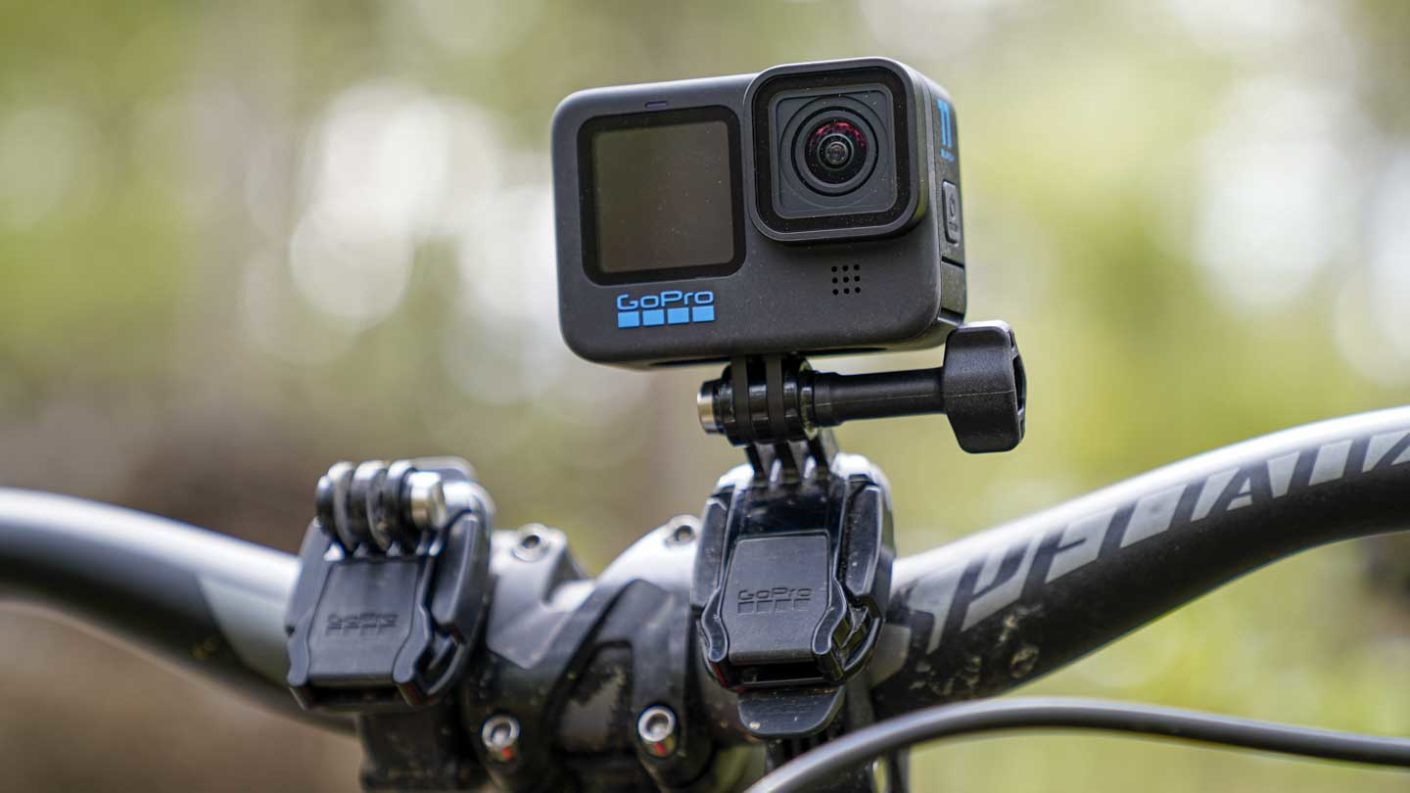
Specification
- Imaging Sensor: 1/1.9-inch 8:7 aspect ratio
- Max Resolutions and framerates: 5.3K60, 4K120, 1080p240
- Color depth: 10-bit
- Image Stabalisation: HyperSmooth 5.0 and 360º Horizon Lock
- Touch Screen display: Yes
- Photo reolsution: 27mp
- Auto tagging of footage: Yes
- Enduro battery: Included
- Dimensions: 71.8x33.6x50.8mm
- Weight: 154g
As usual, GoPro has announced its latest camera, the Hero11 Black, towards the end of the summer season in 2022. While resolution and frame rates remain similar to its predecessor, the Hero10 Black, the Hero11 Black is capable of recording 1080p resolution with frame rates up to 240fps, allowing for 8x slow motion. Additionally, it can shoot stunning 4K video at 120p.
However, this release saw significant improvements in image quality, and the new Horizon Lock feature makes it easier than ever to capture great footage. With its exceptional video quality and features, the GoPro remains unmatched by the competition, solidifying its position as the best action camera on the market.
£499
$499For
- Great quality video
- Excellent stabilisation and horizon correction
- 4K 120p video for slow motion creation
Against
- Doesn't make a significant step-up from Hero10 Black
- Can be hard to open the battery compartment
- First time connection with a smartphone can be very frustrating
GoPro Hero10 Black
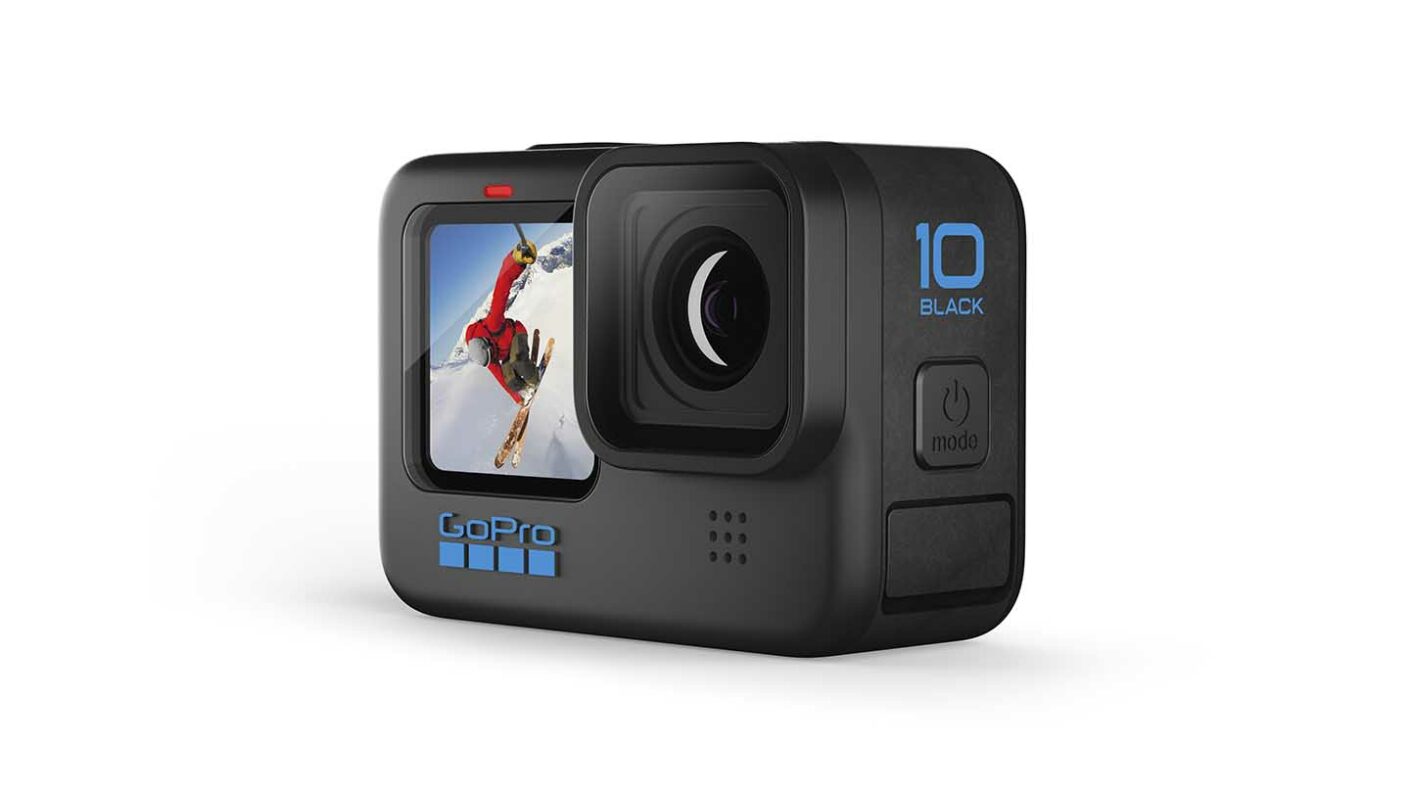
Specification
- Photo : 23MP
- 5.3K: 60fps
- 4K: 120fps
- Video stabalisation: HyperSmooth 4.0
- LCD: Front and Rear (Touch screen)
- Battery: Removable 1720mAh Lithium-Ion
- Slow-mo: 8X
- Waterproof: 33ft (10m)
- Processor: GP2
- Cloud compatibility: Auto upload to GoPro cloud (Sub required)
- Voice control: Yes
- Livestreaming: 1080p
It may have been replaced already – as HeroBlack action cameras are every year – but the GoPro Hero10 Black specs sheet included a few important upgrades. Chief among these was the ability to shoot 4K video at 120fps, a significant increase from the previous maximum of 60fps. Additionally, you can capture 2.7K footage at 240fps, while 1080p footage remains available at 240fps.
If you choose to film in 5.3K resolution on the Hero10 Black, you can now capture footage at 60fps, a marked improvement from the previous maximum of 30fps. Moreover, the camera no longer gives a warning about recording in HEVC if you have disabled the notification.
Overall, with its upgraded frame rates and powerful GP2 processor, the Hero10 Black is a formidable camera for everyday filming and one of the best action cameras you can buy, as well as one of the best GoPro cameras even today.
£499
$499Canon EOS C70
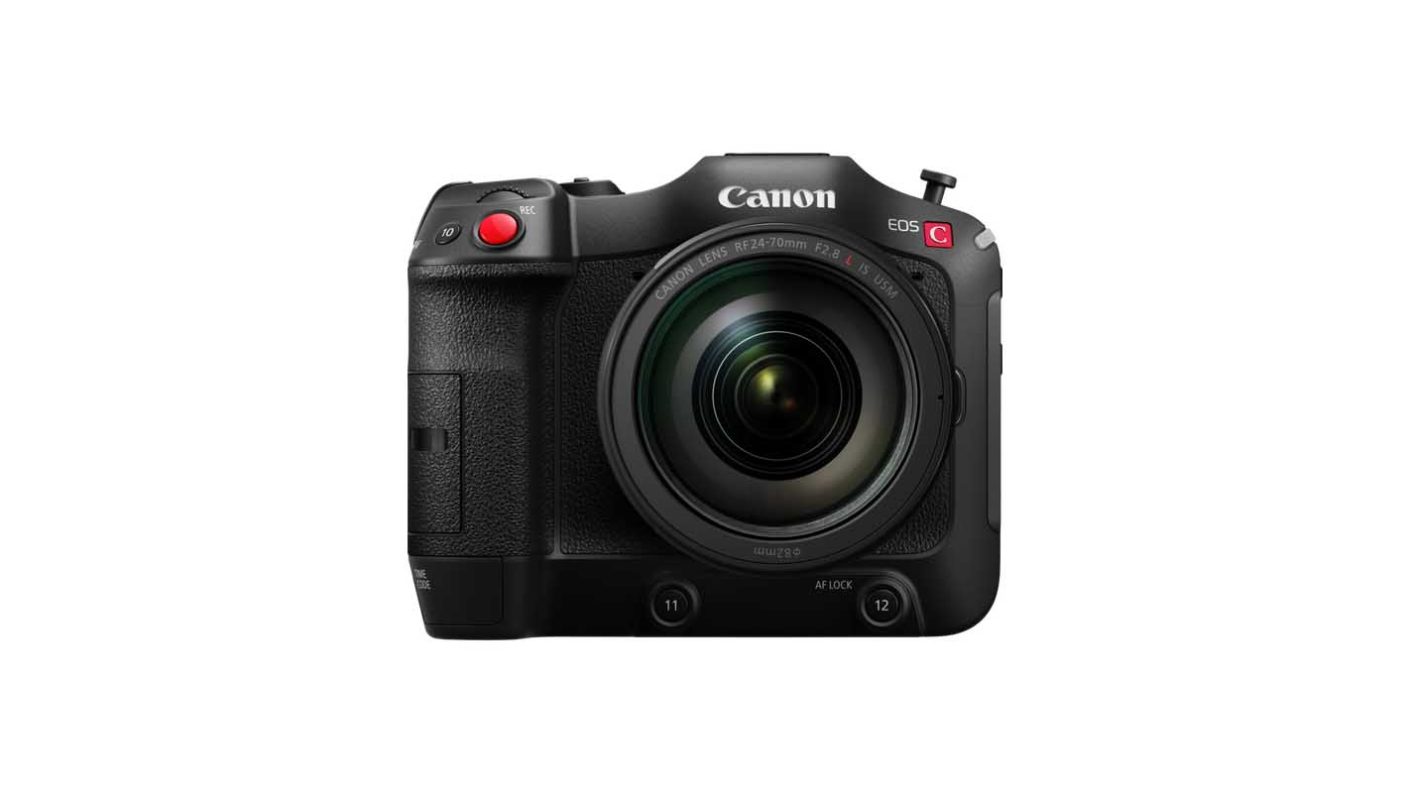
Specification
- Sensor: 26.2 x 13.8 mm (Super35) CMOS
- Sensor Resolution: Effective: 8.85 Megapixel (4096 x 2160)
- Recording Formats: XF-AVC (MXF) ALL-I or Long GOP, 4:2:2 10-bit, MP4 H.265/HEVC, 4:2:2 10-bit, MP4 H.264, 4:2:0 8-bit
- Frame Rates: 4К rесоrdіng: uр tо 120FРЅ, 2К (Сrор) rесоrdіng: uр tо 180 FРЅ, 59.94Нzmоdе (59.94Р / 59.94і / 29.97Р / 23.98Р), 50.00Нzmоdе (50.00Р / 50.00і / 25.00Р)
- Gamma Curve: Canon Log 2, Canon Log 3, HDR-HLG, HDR-PQ, Wide DR
- ISO : 100 to 102,400
- Processor : DIGIC DV7
- Weight: 1190g
The smallest and lightest camera in Canon’s Cinema EOS system, the Canon EOS C70 uses Canon’s new 4K Super 35mm DGO sensor with HDR capabilities.
Thanks to its sensor, the EOS C70 can capture 4K video at 120fps in 4:2:2 10-bit in XF-AVC (All-I or Long-GOP), and MP4 in HEVC (H.265) or H.264.
Moreover, Canon has added 13 customisable buttons, HDMI ports, dual mini XLR ports, a multi-functional hand grip and a built-in ventilation system to this camera. The C70 also features a new built-in ND filter system, providing up to 10 stops of light reduction.
For
- RF mount is convenient for Canon shooters
- Lightweight and portable
- Superb image quality
Against
- None
Kandao QooCam 8K
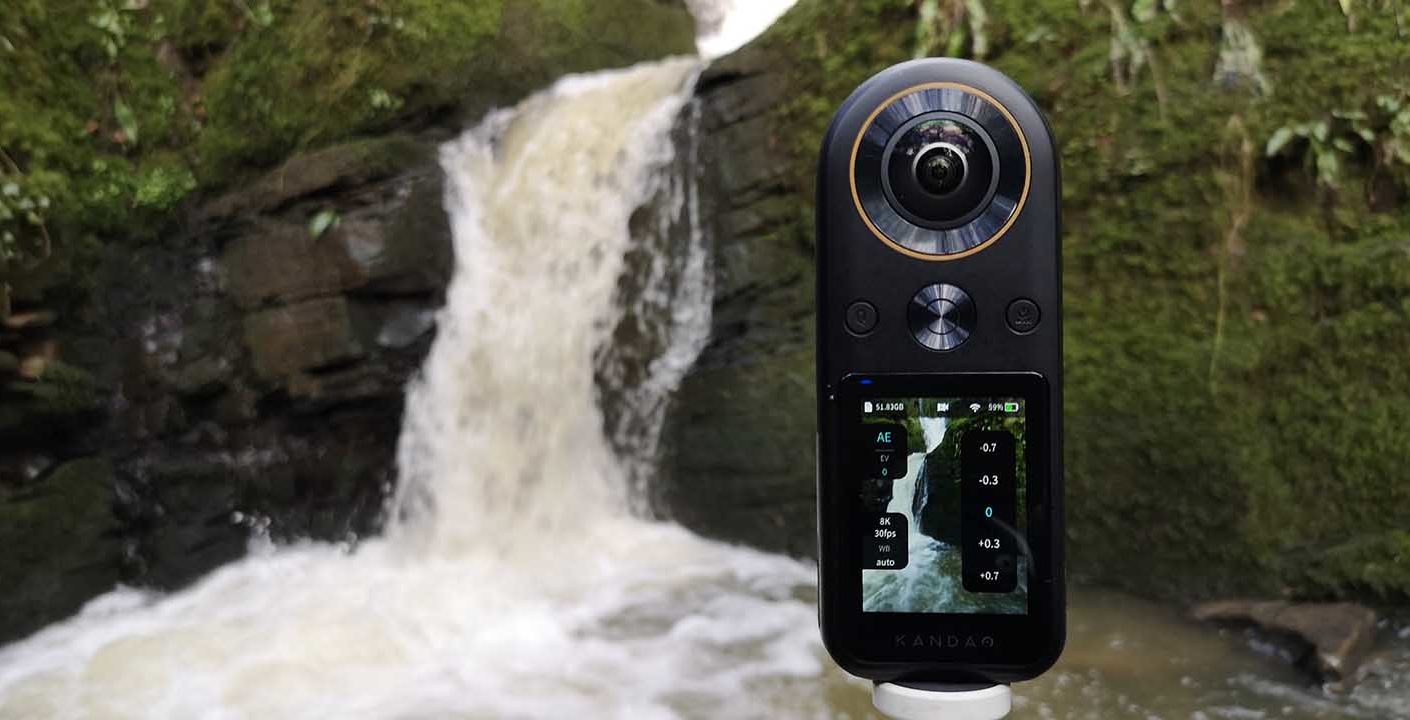
Specification
- Video: 8K at 30p, 4K at 120p
- Sensor: 1/1.7-inch
- Screen: 2.4-inch OLED touchscreen
- Storage: 64GB internal, microSD card slot
The Kandao QooCam 8K spec sheet is pretty impressive. Inside the camera is a 1/1.7-inch sensor, which can provide 8K video recording and 12-bit Raw capture.
As well as 8K, the new QooCam can record 360 videos in 4K at 120fps for slow motion playback. It also supports H.264 /H.265. video coding formats.
When it comes to editing your 360 footage, stitching is done in-camera. Then via the QooCam App you can use the 8K Express Edit tool to fine tune your videos.
Spherical stills can be captured at 30-megapixel resolution, and the QooCam 8K also offers a built-in automated image stacking tool for raw files called Kandao Raw+. This increases the dynamic range and reduces noise.
Kandao has also included its Super Steady stabilisation technology, which uses 6-axis gyro and IMU for electronic stabilisation.
Other features include a 2.4-inch OLED touchscreen for accessing key camera functions, live-streaming capability, a QooCam S vlog mode, 64GB of internal storage and a microSD card slot.
Vloggers will also appreciate the QooCam 8K’s 3.5mm mic port, making it one of the few 360 cameras to offer one.
You’ll also find many of the 360 effects, called SmartClips, which are now common in 360 cameras, such as tiny planet, Inception mode, Hyperlapse, Rabbit Hole and more.
£529
$589 / €600For
- Superb image quality
- Excellent video features
- 3.5mm mic port
- 6-axis stabilisation
Against
- Short battery life
- Loud fan as body heats up
Z Cam E2
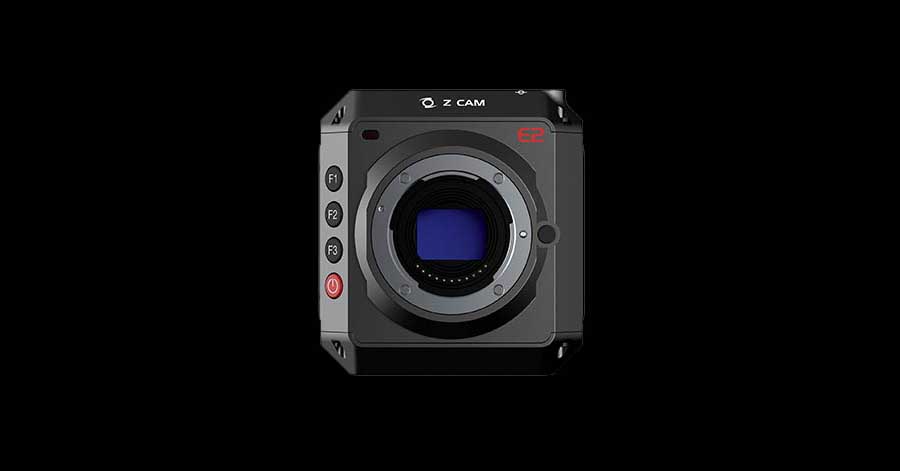
Specification
- Video Resolution: 4K at 120fps
- Sensor: 10.2MP Four Thirds CMOS (same as in the Panasonic GH5S)
Z Cam’s Micro Four Thirds cinema camera can record 4K video at 120fps and capture 10-bit colour.
As well as 4K at 120fps, 10-bit colour, H.264 & H.265 (10 bit), the Z Cam E2 can record 4K at 60fps HDMI 2.0 4K 60fps (10-bit) and 4K at 60fps SDI 12G (optional accessory required). You can also record Full HD at up to 240fps.
Inside the Z Cam E2 is a 4/3 Sony CMOS sensor with a pixel size of pixel size = 4.63m. It also uses what Z Cam calls a ‘Deep Learning Engine built in with SDK.’
The E2’s small body measures 91mm x 98mm x 80mm without the lens, is made of aluminium alloy and uses CFast 2.0 memory cards. The body design also features microphone-in and audio-out ports, USB Type C 3.0 and HDMI ports and a 10-pin LEMO port for synchronization.
Kandao Obsidian S
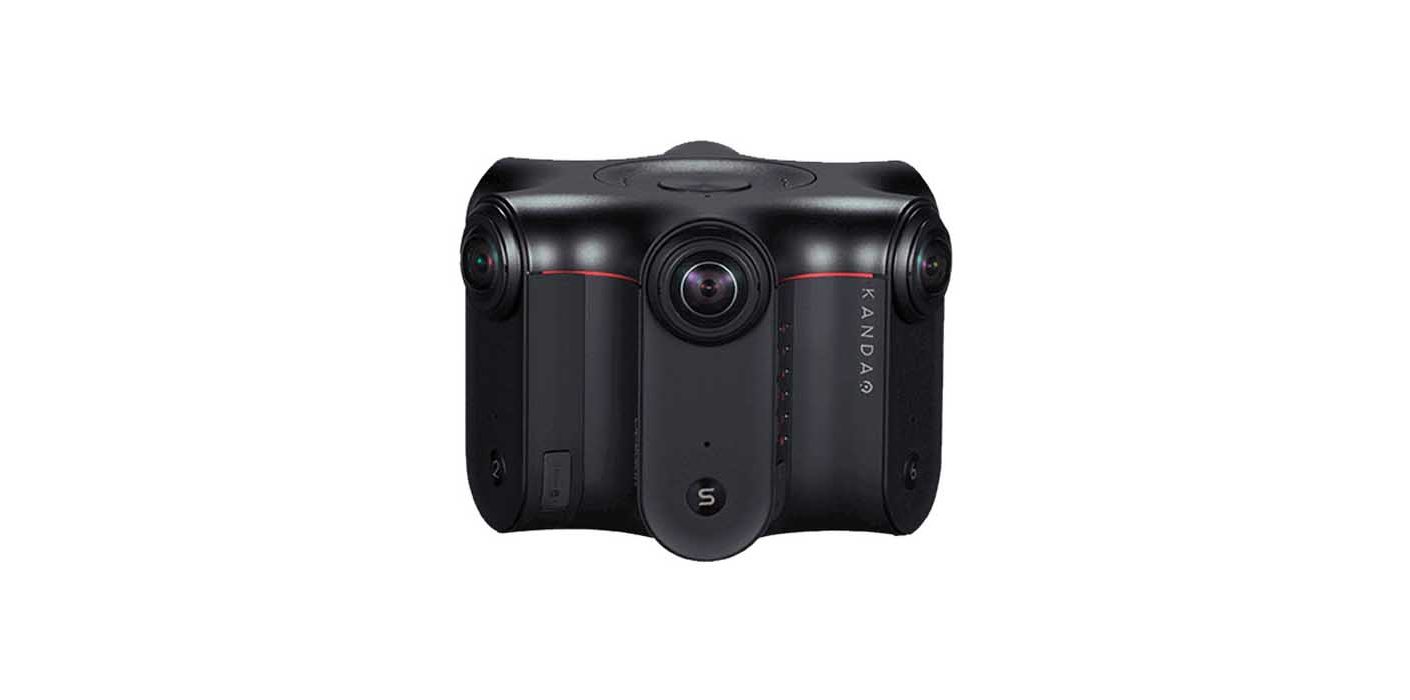
Specification
- Video Resolution: 6K at 50fps, 4K at 120fps
- Livestreaming: 4K 3D Livestreaming
Kandao’s Obsidian S is a professional 3D 360 VR camera that can record immersive video in 6K at 50fps or 3D 4K at 120fps. You can also purchase the separate Kandao Live license for 4K livestreaming capability.
The Obsidian S has six 190-degree lenses that each records content to individual microSD cards. Six microphones also record PCM-format audio.
Other features include an audio input jack, an ethernet port and GigE connectivity for transferring files or providing power.
Recording options include log mode, time-lapse and DNG-format still capture. Inside is a 12-megapixel back-illuminated CMOS sensor providing 10 stops of dynamic range in video, and 12 stops for stills.
Insta360 Pro 2
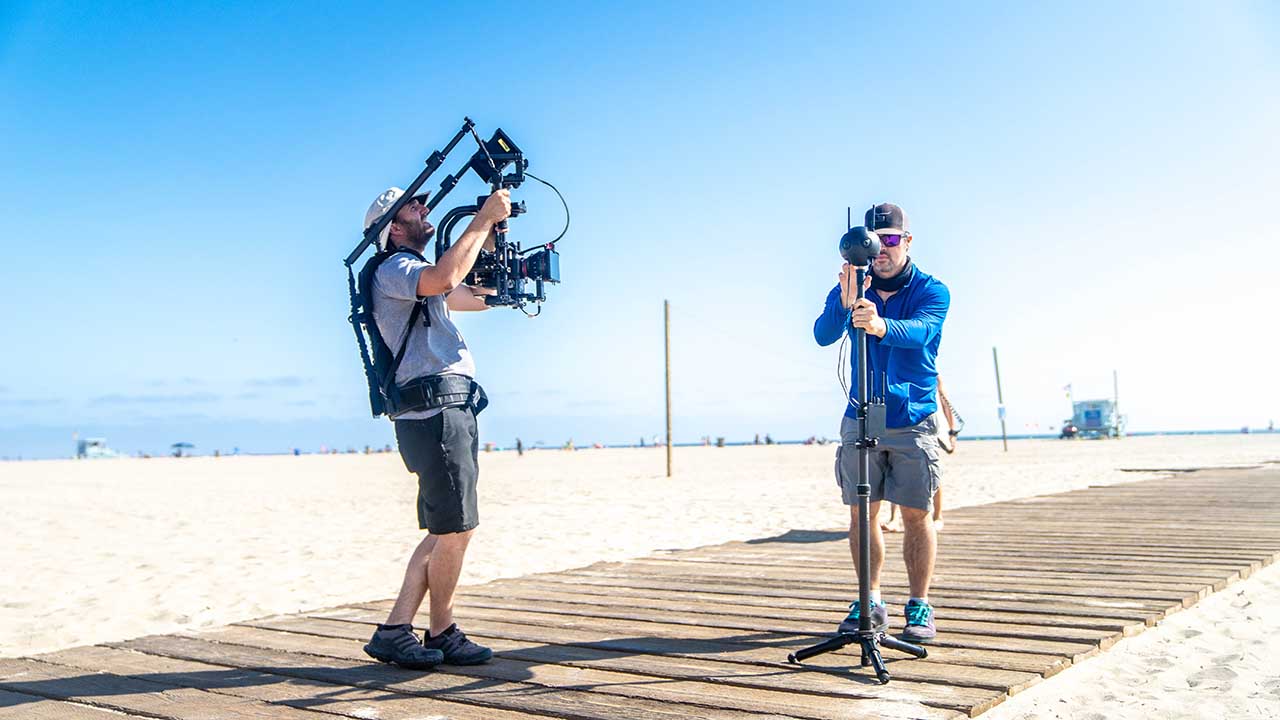
Specification
- Video Resolution: 4K at 120fps, 8K at 30fps (3D), 8K at 60fps (2D)
- Log Mode: i-log mode for colour grading
- Livestreaming: 4K livestream capability
The Insta360 Pro 2 can shoot 8K 3D at 30fps, iK monoscopic footage at 60fps, 6K 3D at 60fps and 4K 3D at 120fps.
There’s also new in-camera HDR that promises a wider, more natural-looking dynamic range.
A new i-Log mode also gives users the opportunity to grade colour in post-production.
Insta360 announced its FlowState stabilisation technology earlier this year as a firmware update, but it comes already embedded in the Pro 2. FlowState uses a gyroscope to track motion on nine axes. Then, when it’s paired with Insta360’s software, it allows users to stabilise their footage automatically.
Other features include 4K live-streaming in both 3D and monoscopic formats. There’s also the option to save 8K versions of your live-stream footage at the same time as your broadcast, meaning you can polish it up later.
There’s also a built-in GPS module, allowing you to append GPS data to your captures and contribute to Google Maps Street View.
The Insta360 Pro 2’s new Farsight technology is a 360-degree live monitoring system that promises a high-definition, low-latency video stream for long-distance preview.
This helps to eliminate the problem some 360 videographers have where WiFi connections between the camera and device can get disconnected.

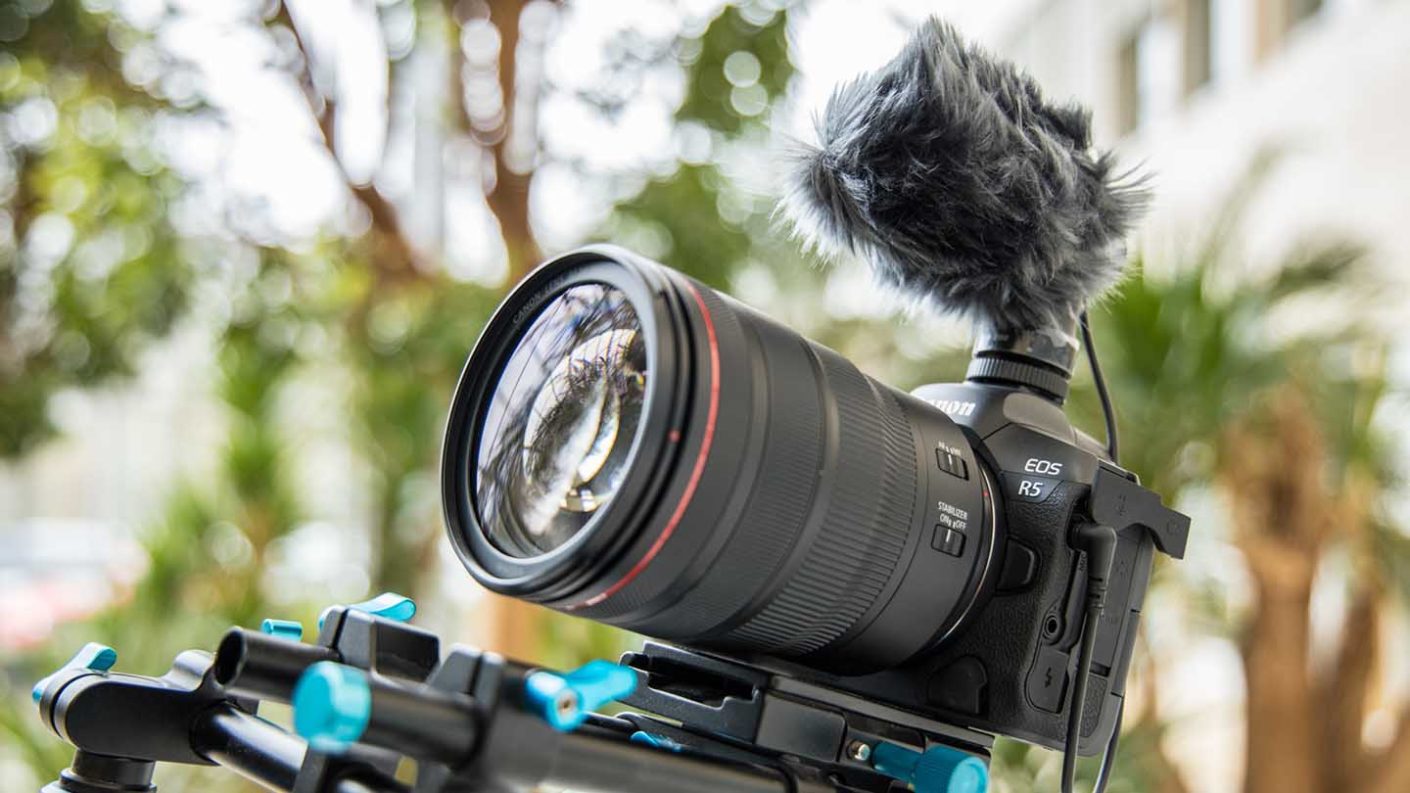



uhhh… Sony A7siii
Did you read the article? It’s the second camera mentioned.
Just came across this article, very informative, just exploring slow mo for some dance shoots and studio promotion. Article gave me insight into potential pitfalls shooting 4K 120
Cheers